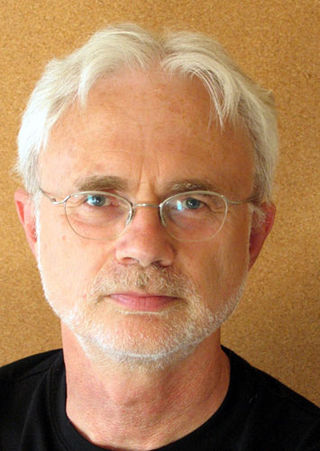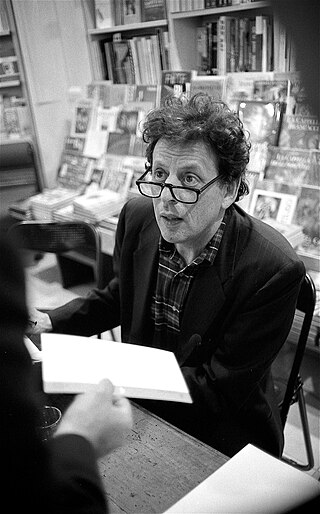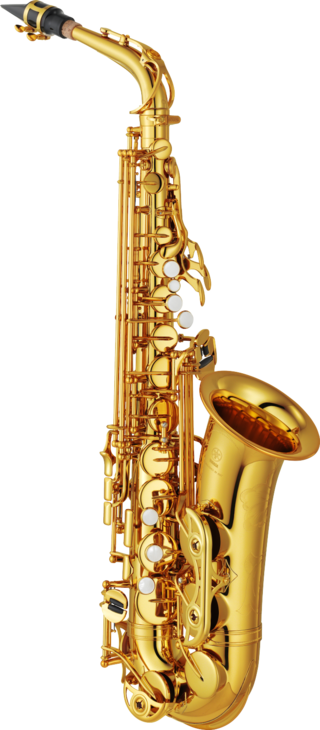
John Coolidge Adams is an American composer and conductor whose music is rooted in minimalism. Among the most regularly performed composers of contemporary classical music, he is particularly noted for his operas, which are often centered around recent historical events. Apart from opera, his oeuvre includes orchestral, concertante, vocal, choral, chamber, electroacoustic and piano music.

Louis Joseph Andriessen was a Dutch composer, pianist and academic teacher. Considered the most influential Dutch composer of his generation, he was a central proponent of The Hague school of composition. Although his music was initially dominated by neoclassicism and serialism, his style gradually shifted to a synthesis of American minimalism, jazz and the manner of Stravinsky.

Philip Glass is an American composer and pianist. He is widely regarded as one of the most influential composers of the late 20th century. Glass's work has been associated with minimalism, being built up from repetitive phrases and shifting layers. Glass describes himself as a composer of "music with repetitive structures", which he has helped to evolve stylistically.

Eadweard Muybridge was an English photographer known for his pioneering work in photographic studies of motion, and early work in motion-picture projection. He adopted the first name "Eadweard" as the original Anglo-Saxon form of "Edward", and the surname "Muybridge", believing it to be similarly archaic. A noted photographer in the 19th century American West, he photographed Yosemite, San Francisco, the newly acquired Alaskan Territory, subjects involved in the Modoc War, and lighthouses on the West Coast. He also made his early "moving" picture studies in California.

Einstein on the Beach is an opera in four acts composed by Philip Glass and directed by theatrical producer Robert Wilson, who also collaborated with Glass on the work's libretto. The opera eschews traditional narrative in favor of a formalist approach based on structured spaces laid out by Wilson in a series of storyboards which are framed and connected by five "knee plays" or intermezzos. The music was written "in the spring, summer and fall of 1975." Glass recounts the collaborative process: "I put [Wilson’s notebook of sketches] on the piano and composed each section like a portrait of the drawing before me. The score was begun in the spring of 1975 and completed by the following November, and those drawings were before me all the time."
Steven Pippin is an English photographer and installation artist. Pippin works with converted or improvised photographic equipment and kinetic sculptures which are often based on physical models and are metaphors for social mechanisms.

The alto saxophone is a member of the saxophone family of woodwind instruments. Saxophones were invented by Belgian instrument designer Adolphe Sax in the 1840s and patented in 1846. The alto saxophone is pitched in the key of E♭, smaller than the B♭ tenor but larger than the B♭ soprano. It is the most common saxophone and is used in popular music, concert bands, chamber music, solo repertoire, military bands, marching bands, pep bands, carnatic music, and jazz.
The Philip Glass Ensemble is an American musical group founded by composer Philip Glass in 1968 to serve as a performance outlet for his experimental minimalist music. The ensemble continues to perform and record to this day, under the musical direction of keyboardist Michael Riesman.

Steve Reich and Musicians, sometimes credited as the Steve Reich Ensemble, is a musical ensemble founded and led by the American composer Steve Reich. The group has premiered and performed many of Reich's works both nationally and internationally. In 1999, Reich received a Grammy Award for "Best Small Ensemble Performance " for the ensemble's performance of Music for 18 Musicians.

L'Arlésienne is incidental music composed by Georges Bizet for Alphonse Daudet's drama of the same name, usually translated as The Girl from Arles. It was first performed on 30 September 1872 at the Théâtre du Vaudeville in Paris. Bizet's original incidental music consists of 27 numbers for chorus and small orchestra, ranging from pieces of background music (mélodrames) only a few measures long, to entr'actes. The score achieves powerful dramatic ends with the most economic of means. Still, the work received poor reviews in the wake of the unsuccessful premiere and is not often performed now in its original form, although recordings are available. However, key pieces of the incidental music, most often heard in the form of two suites for full orchestra, have become some of Bizet's most popular compositions.
Jef "Joseph" Maes was a Belgian composer and violist.

Donald Henry Kay AM is an Australian classical composer.
Glass Pieces is a ballet choreographed by Jerome Robbins to music by Philip Glass, costumes designed by Ben Benson, lighting designed by Ronald Bates and production designed by Robbins and Bates. The ballet was premiered on May 12, 1983, at the New York State Theater, performed by the New York City Ballet.

The Horse in Motion is a series of cabinet cards by Eadweard Muybridge, including six cards that each show a sequential series of six to twelve "automatic electro-photographs" depicting the movement of a horse. Muybridge shot the photographs in June 1878. An additional card reprinted the single image of the horse "Occident" trotting at high speed, which had previously been published by Muybridge in 1877.

The Concerto Project is a collection of concerti written by Philip Glass. The series was begun in 2000 and contains eight works, the most famous of which is probably the Concerto for Cello and Orchestra. Some of the concerti in the volumes were written before the commencement of the project and were categorized into the series.
Simon Rackham is an English composer and artist. He is probably best known for his work;‘Which ever way your nose bends’ the first commission by the six piano ensemble Piano Circus, composed as a companion piece to Steve Reich’s ‘Six Pianos’ & released on their eponymous album by Argo Records (UK) in 1992.
In 1874, photographer Eadweard Muybridge killed Harry Larkyns in Calistoga, California, believing that Larkyns had seduced Muybridge's wife and fathered the baby son Muybridge had believed was his own. At trial the jury, disregarding the judge's instructions, returned a verdict of not guilty on the grounds of justifiable homicide.

Animal Locomotion: An Electro-photographic Investigation of Consecutive Phases of Animal Movements is a series of scientific photographs by Eadweard Muybridge made in 1884 and 1885 at the University of Pennsylvania, to study motion in animals. Published in July 9, 1887, the chronophotographic series comprised 781 collotype plates, each containing up to 36 pictures of the different phases of a specific motion of one subject.













